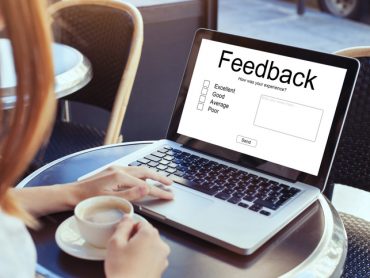Ramping Up Recovery Revenues with Integrated PMS Modules
We’re in it for the long haul with COVID-19; vaccines are being approved and manufactured, but it will take quite some time for mass inoculation, and then there are these new variants to worry over. With this in mind, the anticipated recovery in Q3 2021 may not be a surge back to full occupancy – nor can it be given the ongoing physical distancing requirements.
In hotel-speak, this means several business cycles before corporate and group guests will have the confidence they need to start booking again and boosting our midweek occupancy numbers, low cost-per-guest event room blocks and other streams like BEO sales. So, in the meantime hotels have to adapt to a mostly leisure market, and the purpose today is to discuss how certain PMS features will help you make gains in this segment so that you can regain profitability this calendar year.
The name of the game for at least the six to nine months of 2021 will be all about those quick wins. Thinking conservatively, you need to devise strategies to grow occupancy by 5% per month rather than pin your hopes on an immediate greenlight from national governments to resume travel and realizing, say, 25% increases at a time.
Discussing this complex issue, we were delighted to reconnect with Warren Dehan, President of Maestro PMS, a vendor located right here in my hometown of Toronto, where he stated, “If anything, a positive trend that the pandemic has brought to the forefront is thinking more holistically about revenue per available guest or the total revenue that each guest spends at your hotel.”
Given the centrality of its reservation data, your PMS is therefore the first place to look for honing your total revenue (TRevPAR for short) because, after you connect all the various modules into one centralized guest profile hub, you can then perform differential analyses on which customer types actually spend at your various outlets versus those who are merely heads in beds. In antecovidian times, we would be fine with the latter, but with physical distancing and room cleaning buffers preventing us from maximizing occupancies, we need to motivate every guest to spend everywhere.
TRevPAR in Context
When looking at the STR data for the autumn months, it’s easy to notice the whopping negative deltas for occupancy, ADR and RevPAR when comparing 2020 to 2019. But what you should also scrutinize is the difference for the month-over-month gains of the first two of these metrics versus RevPAR or EDITBA PAR which are both scarily below where we need them to be. This is where increasing revenue per guest will help the most – profitability.
“You need holistic analytics on the entire customer journey, not just occupancy numbers to yield room rates month-over-month,” continued Dehan. “With budgets tighter than ever, you want to be able to target those future guests who are more likely to use your restaurant, your spa, your golf course or even buy souvenirs at your gift shop. All these amenities have overhead costs that the hotel revenue ledger often absorbs, yet with all the sales data from these outlets flowing through an integrated analytics module you can see what profiles are staying two nights versus three and dining with you every night or picking up a spa treatment.”
In demoing these latest PMS tools, Dehan showed the synergy between Maestro’s analytics and feedback modules whereby the latter sends out a post-stay email with questions tailored specifically to the amenities that guest used during their time on property. Then, with end-to-end data from initial booking and services rendered through to survey sentiments and all connected via the reservation on file, you can data mine and generate an actionable report to inform what packages or promotions will be best-received and who to target for the upcoming months in 2021.
PMS Features and Use Cases
Getting those quick wins in the transient segment while under immense budgetary pressure means you have to approach marketing with a sniper rifle and not a shotgun. As such, here are some PMS features you should aim to better utilize in 2021 and how they might be applied.
1. Filtered marketing. Motivating return visits will be critical for the first two quarters of 2021, but people are already oversaturated with emails, so you have to hit them with a strong call to action. This means being able to query those past guests who partook in specific amenities or activities then incentivizing them appropriately. Filtering means getting more granular than that by isolating for those guests from a specific geographic territory and LOS so that you can motivate longer-staying customers. Moreover, doing this all within a PMS means you have physical addresses on file to send out some snail mail and cut through all the eblast noise.
2. Revenue management integration. No doubt your DoSM and revenue director are already talking at least once a week, but perhaps some of that conversation can be digitized. That is, marketers should have access to an RM module within a PMS so they can check on pace and identify gap periods for testing packages and promotions. To build off the intelligent filtering from the first feature, discovering some of the more unique characteristics of some of your guests will also make you more adept at finding similar customers.
3. Amenity and labor management. The big thrust for TRevPAR is engaging your hotel guests to increase ancillary revenues. By connecting, for example, the spa to your PMS, you can identify the differential behavioral traits of day spa versus stay spa customers to then make a decision about how to increase the latter. An amenity integration like this would also result in having data on treatment room utilization (TRU) so that you can optimize what’s on the menu and how to schedule spa providers. The same sort of granular analysis can, of course, be done for F&B when there’s a two-way POS connection.
4. Specific feedback questions. When you can link what a guest bought onsite to their reservation, then you can also send out surveys that ask directly about those amenities instead of the more generic post-stay questionnaires that won’t give you detailed insights. In doing so, you can then pinpoint which departments may need some coaching as well as which amenities are perceived as true positives for the experience to then use those in future messaging or promotions.
5. Mid-stay surveys and error recovery. What’s the point in sending a complimentary fruit tray to a guest’s room as a form of apology if that guest has already left the hotel? Building on the previous point, with amenity utilization directly tied to a guest’s reservation, you can not only send out a more bespoke post-check-in survey but you can also better identify any problems and act upon those errors well before the guest leaves.
As all hotel brands will need to evolve in light of this pandemic, activating the full array of tools offered by your PMS can offer invaluable recommendations for the short run and for years to come. When you know what drives customers to spend more on ancillary operations as well as what profiles are more likely to optimize TRevPAR, this can tell you how best to grow ADR, how to reassign FF&E budget or what amenities to leverage as topline messaging. Yes, you can need vision to get through this, and that should come from making as informed decisions as possible.




